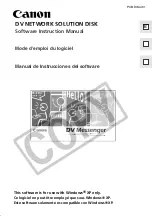
Section 0.1:Document Conventions
v
Introduction
Welcome to the Red Hat Network User Reference Guide 3.1.
The Red Hat Network User Reference Guide will guide you through registering your system for Red
Hat Network and using its many features. Depending on which version of Red Hat Linux you have
installed, the
Red Hat Network Registration Client
and the
Red Hat Update Agent
might be
different than the ones described in this manual as new features are added. All version of this manual
are available in HTML and PDF formats at http://www.redhat.com/docs/manuals/RHNetwork/. Once
you use Red Hat Network to update these applications, you can use the latest version of this manual.
This version of the manual covers version 2.7.0 of the Red Hat Update Agent and version 1.5.0 of the
Red Hat Network Registration Client.
For a more detailed, technical overview of Red Hat Network, please refer to the Red Hat Network
Technical Paper available at http://www.redhat.com/products/network/.
Document Conventions
When you read this manual, you will see that certain words are represented in different fonts, type-
faces, sizes and weights. This highlighting is systematic; different words are represented in the same
style to indicate their inclusion in a specific category. The types of words that are represented this way
include the following:
command
Linux commands (and other operating system commands, when used) are represented this way.
This style should indicate to you that you can type in the word or phrase on the command line
and press
[Enter]
to invoke a command. Sometimes a command contains words that would be
displayed in a different style on their own (e.g., filenames). In these cases, they are considered
to be part of the command, so the entire phrase will be displayed as a command. For example:
Use the
cat testfile
command to view the contents of a file, named
testfile
, in the
current working directory.
filename
Filenames, directory names, paths and RPM package names are represented this way. This style
should indicate that a particular file or directory exists by that name on your Red Hat Linux
system. Examples:
The
.bashrc
file in your home directory contains bash shell definitions and aliases for your
own use.
The
/etc/fstab
file contains information about different system devices and filesystems.
Summary of Contents for NETWORK - USER REFERENCE GUIDE 3.1
Page 1: ...Red Hat Network User Reference Guide 3 1 ...
Page 26: ...26 Chapter 2 Red Hat Network Registration Client ...
Page 64: ...64 Chapter 5 Software Manager Figure 5 6 Scheduled Actions ...
Page 66: ...66 Chapter 6 Red Hat Network Daemon ...
Page 68: ...68 Chapter 7 Using Red Hat Network with Red Hat Linux 6 2 ...






































